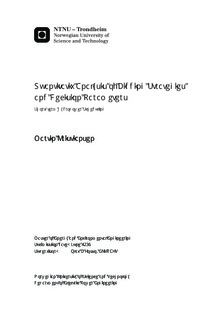| dc.description.abstract | Norwegian hydropower producers bid to sell tomorrows power in the day-ahead auction called Elspot, at the Nordic power exchange, Nord Pool Spot. Price and inflow are stochastic variables, as well as important decision parameters, in the short-term production scheduling. Market analysts evaluate the forecasts continuously as the variables become revealed through their actual values in the future. This allows us to see how precise they were, but not how it affected the allocation of production and water, and most importantly the producers profits. This thesis will evaluate the significance of these profits with a deterministic optimization model (SHOP), where historical spot prices are used as an optimal reference for the price forecasts used to calculate price independent day-ahead bids. Hence, the results will represent the theoretical improvement potential of price forecasts, as well as the greatest potential value of using a stochastic model. Three river systems has been analyzed, diversified with respect to capacity and flexibility, and the results shows that the maximum theoretical improvement potential, relative to the optimal spot sales, varies between 0.7480 % and 1.7825 %. The lowest- and highest improvements are found for the smallest- and largest river system, respectively. The average improvement potential for the operative price forecasts spans from 0.0531 % to 0.2397 %, for the same systems. The significance of the price forecasts varies throughout the year, and it is generally highest when the volatility- and level of price, is high. As for larger price areas the theoretical improvement potential varies between 0.1404 % and 1.4685 %, where NO2 gives the highest potential, and NO3 the lowest. Price uncertainty is proven to have greater impact on short-term scheduling than uncertainty about inflow, due to the fact that inflow uncertainty only affects the income when calculating forced production to avoid potential spillage. Hence, river systems with a low degree of regulation are more exposed to inflow uncertainty. However, the extreme scenarios in both cases gives nearly identical feasible improvement potential, given a system that is exposed for spillage risk. | nb_NO |

